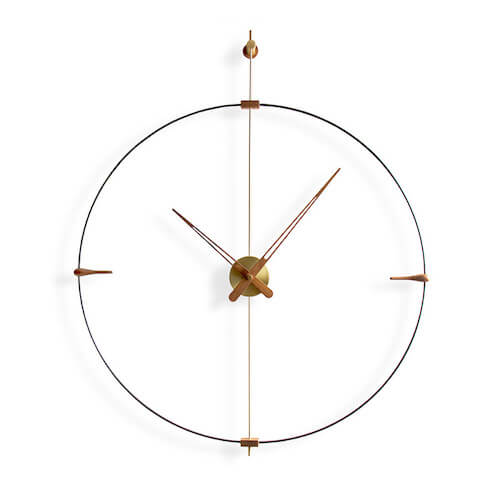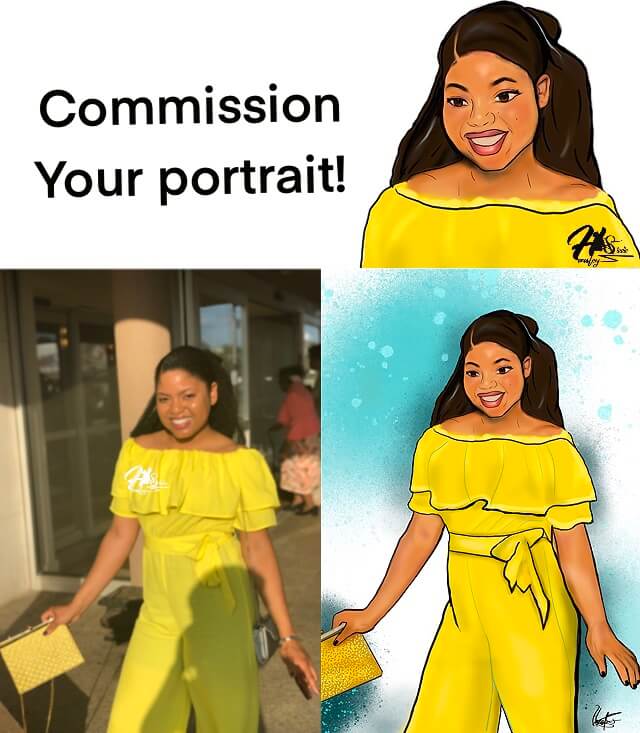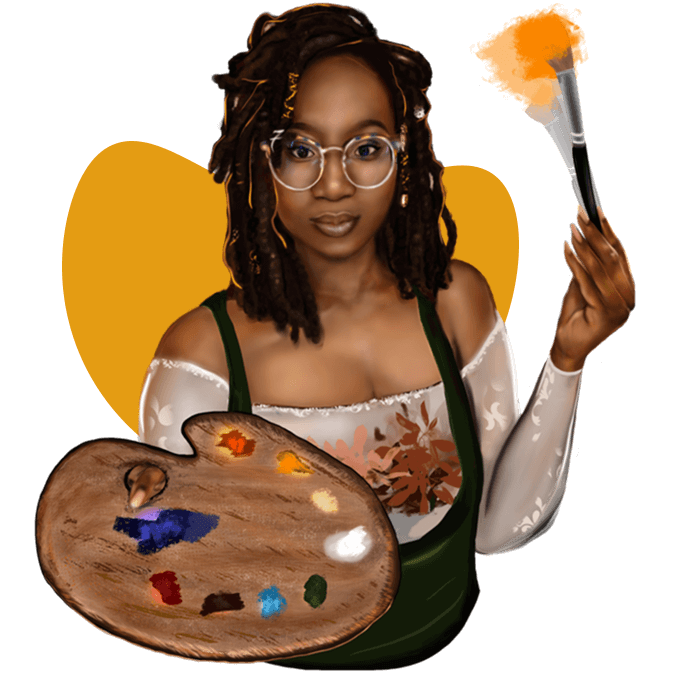We all have a set of expectations in life.
When it comes to artwork and commissioned paintings – the clearer the expressed expectation, the better the result!
1. Reference Images
As a portrait painter, this is the most important point! I often get requests for portrait painting but the images quality provided are simply unworkable, thus I must decline.
What constitutes a poor image? Let’s look at some factors.
- Low resolution
- Dark image, poor lighting
- Overly grainy or pixelated image
- Blurriness
Portrait painting can range from a mere resemblance to near hyper-realistic reproductions. If your desire is the later, to achieve this feat you must have a high resolution reference image. Artists typically work from the reference image you provide and zooms in to get the micro-details. Before you submit a digital image for consideration, ask yourself – can I zoom in and see the details?

Think about it: Now, we are easily able to print out our images. Have you noticed? For some printing companies, they require approval of your image before you can print. You’ll often get a warning, “to get a better print, you need a higher resolution image,” especially if you’re printing on a larger scaled item. Think, how much more so, for an artist that’s reproducing your image!
It’s always best to submit a high resolution photo. That way, the artist is clearly able to see the image you’re aiming for.
However, If you’re okay with art-forms that are more expressive and are closer in the spectrum of abstract art, then your low-resolution image will be just fine!
Be clear on what you’re looking for!
2. Expectations
Some of us, do indeed wish we were mind-readers to know exactly what you’re thinking! This would be a great skill in the art industry and not just sci-fi books and shows. Unfortunately, artists are not mind-readers. When requesting commission work, be clear on what you want.
Give details, show examples, bring reference images!
Examine previous work that the artist has done, use those as examples and reference sources. Since you can see work they’ve completed before, you can get a general idea of what they do. While many artists have hidden skills and some love a challenge, artists who complete more abstract and figurative work generally don’t do hyper-realism pieces. Some artists enjoy staying in the domain they feel most comfortable in i.e. working with only landscape pieces.
It’s okay to ask questions!
With this consideration in mind, if you prefer a particular style over another, ask the artist if they can achieve that style.
The digital artwork referenced above was done in a more cartoon-like reproduction style. I took out the background & added splashes of color in its place. Let’s say you don’t like the background in a particular reference image you provide, talk to the artist on how you’d like to replace the background.
This could include:
- cropping or removing a person, tree, building etc…
- Having a solid color background
- A blended color background
- A landscape image you provide
Some may request collages that require merging of reference images. Ask the artist if they’re comfortable doing so! A general rule: anything that requires imagining items or changes incorporated in the commissioned painting that are not present in the reference image – ask the artist if they can achieve the look.
Keep in mind the more complex a request is, the more the cost!
Regardless of the vision you have in your mind, clearly express those points to the commissioning artist.
3. Artist recommendation
Requesting a commission piece requires some degree of consultation first! Refer back to the previously addressed points; an initial consultation must happen. The artist, having worked in the field of creating artwork generally has more experience than you, the commission agent. Be flexible and take in their suggestions. This doesn’t mean abandoning your vision, it can be achieved through a more ideal route.
Personally, as a portrait painter, unless it’s a digital request, all my portrait paintings are done using oil paint. Acrylic paint is cheaper for a number of reasons from oil paint and thereby will be overall cheaper than a commissioned oil painting. However, as the artist, through experience I can confirm oil paint is more suitable for portrait paintings. As the artist, I can readily achieve a near hyper-realism reproduction with oil paint. It’s for example more malleable, great for blending and building needed texture, it gives more of a glossy finish and so much more. Thus, I will refer my clients to oil commissions.
When presented with an artist’s recommendation, don’t be afraid to ask questions and perhaps request visuals for the proposed suggestion.
4. Time-frame Deadlines
Depending on the medium used, your requested commission will take time to complete. For physical canvases, the drying time for example differs depending on whether the artist used watercolor, acrylic or oil paint. Oil painting has the longest drying time of the 3 mediums mentioned, it can take anywhere from days to months to fully dry. Acrylic paint dries within minutes after it’s applied to the canvas.
 With these points in mind, do the following:
With these points in mind, do the following:
-
- be clear if you have a deadline to meet
- Give time for the work to be completed
- Make request months in advance
- Ask the artist to provide a time-schedule
- For physical reproductions, anticipate drying time delays
- Plan for added shipping and delivery time
5. Keep an open mind.
The final product may not be exactly as you envisioned it. But hey you might just like it!
To prevent complete dissatisfaction, ask the artist if they’re able to provide previews along the process. It’s best when the piece is just about 2/3rd complete.
Working in oil for example, the beginning stages of an artwork doesn’t look like much and for an inexperienced eye can be disappointing to look at, but don’t lose heart! There’s more work to be done!
If you’ve requested a portrait commission, ask the artist if they can send you an update picture. Set parameters, like an update of the face near completion. Give feedback about the background then take a seat back and wait!
Often, before surrendering the completed work to you, the artist will ask if you want an alteration. Be aware, depending on what you ask, there might, be an additional cost.
Let’s look at this scenario:
The artist completed the physical painted canvas and presented it to commissioning agent A.
A says: “This is beautiful, but I want the person to be centered more in the middle of the canvas.”The portrait painting does indeed, visibly leans more towards the left or right side of the canvas.
This modification request is impossible to do, without starting from scratch. You, the commission agent, might either have to pay for another commissioned piece or another alternative might be to get 2 other commissioned pieces with similar sized canvases (height remaining the same, but a smaller width) and add it to the overall painting set. The original painting will be in the middle and the other two be on its sides.
Commissioning a painting is exciting!
Remember to be clear and transparent about your expectations and the vision you want to accomplish.
Follow the steps above and that’ll increase the likelihood of walking away thoroughly satisfied.
May your painting visions come to life!



